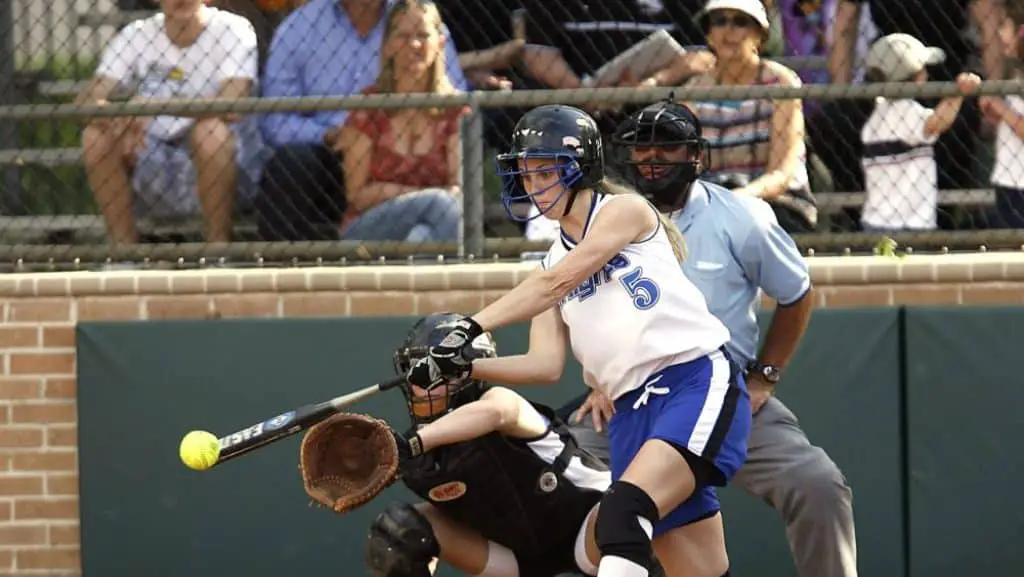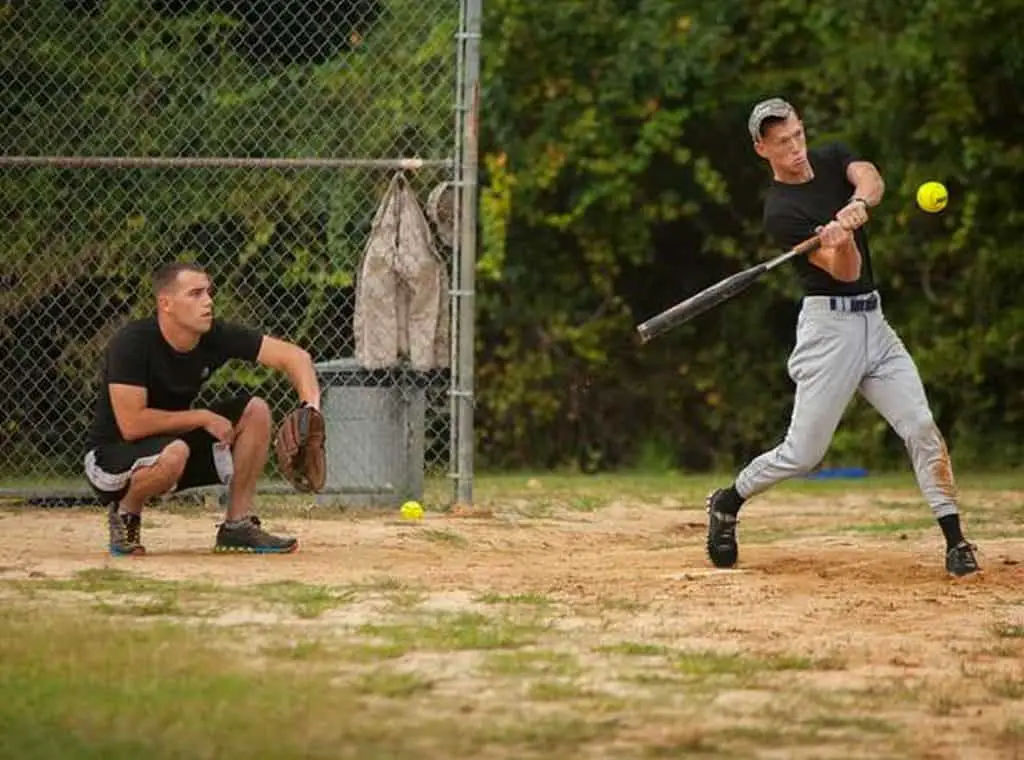What is a Good Batting Average in Softball? (Answered In Detail!)
Almost any aspect of the softball game can be viewed through numbers.
There’s a statistical category for just about anything that happens on the field.
Compared to most other sports, softball is way ahead in using statistics to evaluate players and teams, devise game strategies, and construct rosters.
However, with the development of advanced statistics, some categories have become increasingly complicated and difficult to understand, even for some hard-core softball fans.
That’s why many still prefer to evaluate a player’s performance through some of the simple, old-school stats.
One of those is definitely Batting Average.
Even though it’s been overshadowed lately by more complex batting statistics, BA or AVG is still a go-to number for many when checking out how a certain batter is performing.
So, it’s important to know what is a good Batting Average in softball so that you can tell if a batter is excelling or underperforming.
Table of Contents
What is Batting Average in Softball?
First, you should understand what this stat actually means.
Although it doesn’t provide a full picture of a player’s performance, Batting Average is one of the oldest, most universal, and most frequently used ways to measure a hitter’s success while at bat.
The batting Average is a fairly straightforward metric as it’s calculated by simply dividing the number of hits from a certain batter by the number of their times at bat.
Still, there is some complexity to this, as it’s not always clear what constitutes an at-bat or a hit.
Mostly, for purposes of calculating the Batting Average, a hit is counted only when a batter gets on the base by their own merit.
This stat can also be used for the evaluation of pitchers’ performance.
In those cases, it’s calculated only for hits and at-bats against a certain pitcher and called Batting Average Against or Opponent’s Batting Average.
What is a Good Batting Average in Softball?

The answer to the question of what a good Batting Average is can be somewhat complex, as it will mostly depend on the level of competition.
In general, Batting Average in softball will always be higher than in baseball at a similar level or age group, mainly due to the bigger ball and different pitching techniques.
Youth Softball
As pitchers in youth baseball are not as skilled as older ones, a good BA for young batters will be higher than for their more experienced counterparts.
For example, at the 8u level, you may even see some kids hitting above .700 Batting Averages, which is unthinkable at more serious competitions.
For 12u ball, everything above .400 may be considered a good BA, .450 is an excellent average, while hitting above .500 is exceptional.
14u to 18u
As players get older, at 14u, 16u, and 18u levels, anyone batting over .310 can be considered a good batter, while getting over .400 counts as really good.
College Softball
At the highest level of softball in the US, to be considered a good hitter, you’ll need a Batting Average at least in the range of .280 to .300.
Any batter hitting above that is regarded as very good. The territory above .400 is commonly only reserved for the best players in the country.
Of course, some players batting for college powerhouses can often unrealistically drive up their Batting Averages when playing inferior opposition.
This is not only the case in college but in all other levels of softball.
Slowpitch Softball
Needless to say, a good Batting Average in slowpitch softball will be significantly higher than in the fastpitch version of the sport.
Depending on the level of competition and quality of the opposition, a good slowpitch batter should have at least a .500 Batting Average.
How to Calculate Batting Average in Softball?

As I already explained, calculating Batting Average is, at least at the first glance, fairly simple and involves dividing the number of hits by the number of at-bats.
However, not every appearance at the plate counts as an at-bat.
So, the number of at-bats used for calculating BA (AVG) will start with the number of players’ total plate appearances.
Then, from that number, you should subtract the times a player reaches the base through catcher’s interference, sacrifices, and the times a player is hit by a pitch or walked,
As for the base hits, the calculation includes the number of singles, doubles, triples, or home runs for a certain player.
Only when you’ve properly counted these numbers, you can divide hits by the number of at-bats. For statistical purposes, the Batting Average is rounded to the third digit after the decimal.
For example, a batting average of .435332 will be recorded as .435.
Who has the Highest Batting Average in Softball?
To determine who has the highest Batting Average in softball we should look at NCAA D1 college softball, the highest level of competition in the US.
It’s also the level where the most precise statistical records are kept.
Among the players with full four years of D1 college softball, the highest batting average belongs to Jill Justin, who played for Northern Illinois Huskies from 1986 to 1989.
Her D1 career Batting average is .467. She is followed by Alison McCutcheon (Arizona Wild Cats, 1995-1998) and Stacey Nuveman (UCLA Bruins, 1997-2002), both with a .466 Batting Average.
There are four players with higher Batting Averages than JIll Justin, but none of them played full D1 softball for the full four years.
These players are:
- Stacy Cowen – .530 (Manhattan Jaspers, 1991-1992)
- Kelly Knight – .489 (Delaware State Hornets, 1993-1995)
- Patricia Del Real – .473 (Jackson State Tigers & Alabama State Hornets, 2002-2004)
- Koteria Harris – .468 (Alcorn State Braves, 1997-1999)
Conclusion
The ease with which the Batting Average is calculated makes it simple for every softball fan to understand.
It’s also the reason why this statistical category is so popular as a tool for evaluating a softball batter’s performance.
Still, while a solid Batting Average can point to a good batter, BA (or AVG) has many critics who point to the downsides of this stat.
Most notably, the lack of information about the quality of at-bats. Or more precisely, whether the batter can reach the base and their performance at the base.
Therefore, while Batting Average is still widely used, plenty of teams and players prefer more advanced batting stats, such as QAB, OPB, or OPS.




